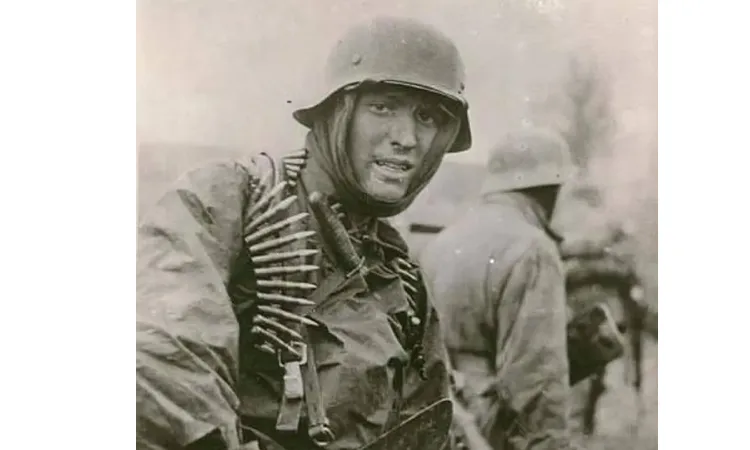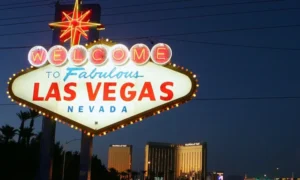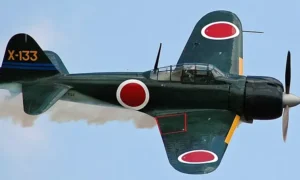Picture this: chaos all around, guns blazing, explosions shaking the earth then that sharp, metallic clink as a soldier yanks on his WW2 helmet. It’s not just a bucket of steel, you know? That thing is basically a soldier’s last line of defense, and a badge of guts and grit all rolled into one. You see a helmet like that, you’re not just looking at gear you’re staring right at survival, at raw nerve.
Think about the M1 helmet American classic, right? Or the German Stahlhelm, which honestly looks like something straight out of a dystopian comic book. Each one’s got battle scars: dents, worn paint, maybe even a faded insignia barely hanging on. Every little mark? That’s a story, man. Stories about muddy trenches, freezing nights, close calls. And yeah, people are still out there hunting for these helmets, eager to snatch up a slice of the past.
Ever find yourself glued to a war doc or freeze framing a movie just to get a better look at one of those helmets? Same here. There’s just something electric about it almost spooky, holding a real helmet and thinking, “Dang, someone actually wore this dodging bullets.” It’s not just collecting junk; it is holding history.
So, let’s get into it. This isn’t just another dry history lesson. We’re talking helmet design quirks, what made them tick, and why collectors go bananas over them even now. Whether you’re the type who can’t resist a war museum or you just like owning cool old stuff, you’re in the right place. Buckle up the stories? They are just getting started.
WWII Military Vehicles On Miltrade.com
Types of WW2 War Helmets
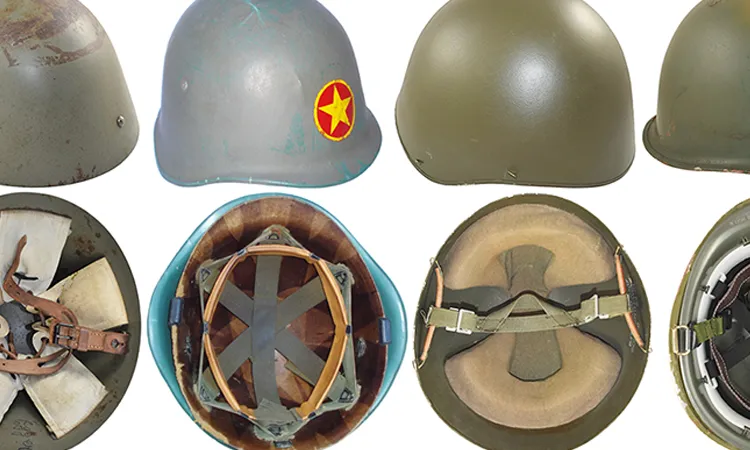
Comparison of Iconic WW2 Helmet Models
| Helmet Model | Country | Key Features | Collector Appeal |
|---|---|---|---|
| M1 Helmet | United States | Steel shell, fiberglass liner, versatile design | Battle worn examples and unit marked pieces on Miltrade |
| Stahlhelm | Germany | Flared rim, Nazi insignia, heavy steel | Iconic WWII design, SS marked versions highly sought |
| Brodie Helmet | United Kingdom | Flat bowl shape, shrapnel deflection | Regimental markings increase value |
| SSH-40 Helmet | Soviet Union | Plain steel bowl, red star insignia | Simple design, prized for Eastern Front history |
| M33 / Type 90 / Adrian | Italy / Japan / France | Unique national designs, mixed materials | Less common, valued by niche collectors |
( United States )The M1 Helmet
The M1 helmet is the most iconic piece of American military equipment of World War II. It was first created in 1941 and replaced the M1917 helmet to become the iconic symbol of the U.S. Army during the conflict.
Design & Features:
Outer Shell: Made of steel, the M1 featured a rim reinforcement to provide extra protection from shrapnel.
Liner: The helmet came equipped with a leather chin strap and a fiberglass liner, essential for both comfort and protection.
Versatility: U.S. forces deployed the M1 in nearly every combat theater from Normandy beaches to Pacific jungles.
Collector’s Angle:
The M1 helmet is perhaps the most popular item of WWII, with many variations by branch and unit. From vintage liners to insignia, to M1s carrying battle scars, this helmet is a rare find on miltrade.
Military Vehicles On Miltrade.com
( Germany )The Stahlhelm
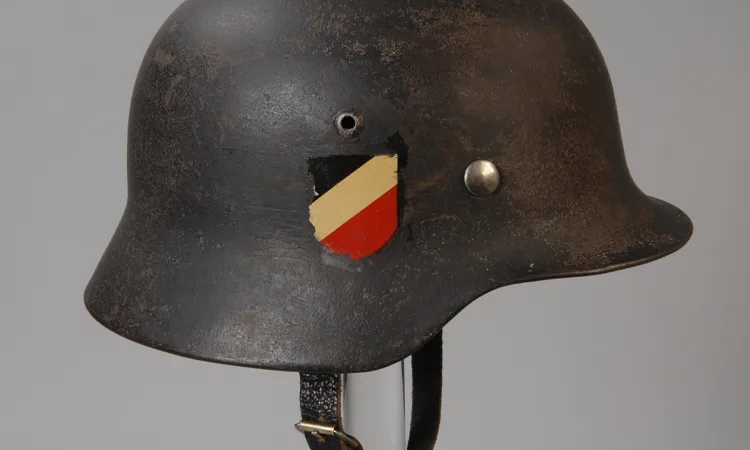
The Stahlhelm (steel helmet) first made an appearance during World War I but was used by the Nazi Germany during WWII too. Well known for its distinctive shape, the Stahlhelm gave the best protection to the soldiers in the trenches.
Design & Features:
Shape: The curved, flared rim of the helmet provided a wider protection to the neck and ears.
Material: Made of steel, the helmet was designed to provide protection against shrapnel and bullets.
Insignia: Many helmets featured Nazi insignia, including the swastika or Waffen SS insignia.
( United Kingdom )The Brodie Helmet
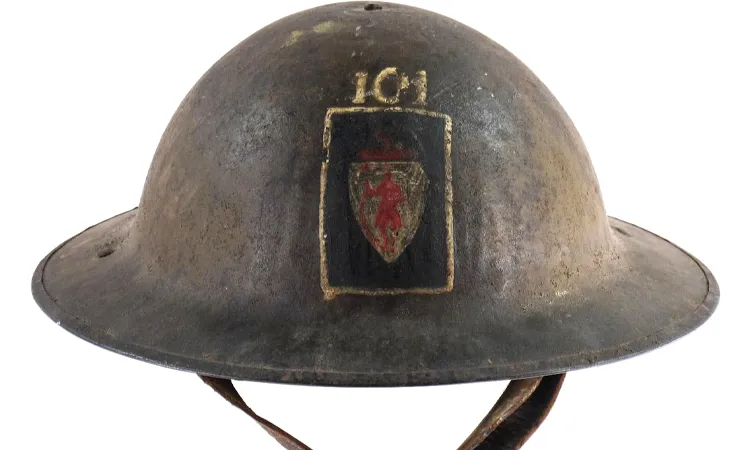
The Brodie helmet was first designed in World War I but was the British troops’ standard helmet in WWII. While not as good as the Stahlhelm helmet of the Germans, it provided adequate protection to the troops fighting on the battlefield.
Design & Features:
Shape: The flat, bowl shape was designed to deflect shrapnel and prevent direct hits.
Material: Made of steel, the Brodie helmet was often dark green or khaki camouflage painted.
Evolution: By World War II, the design had improved with a more comfortable liner and chinstrap.
Military Helmets and Caps On Miltrade.com
(Soviet Union )The SSH 40 Helmet
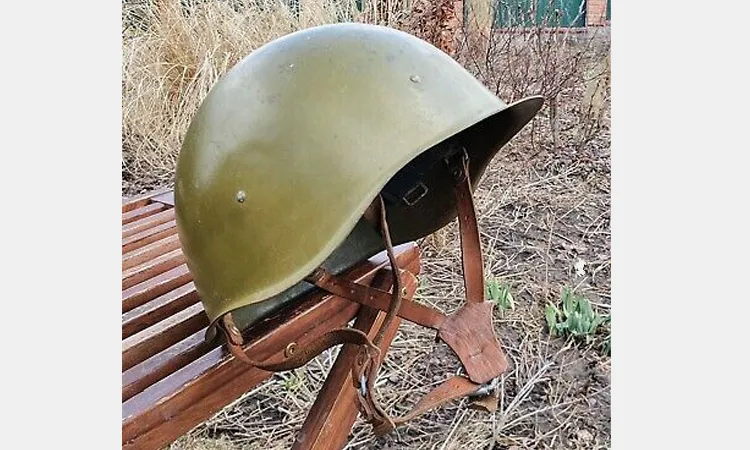
The SSH 40 was the most widely used helmet for Soviet troops during WWII, replacing earlier models like the SSH 36.
Design & Features:
Shape: It consisted of a simple, unadorned bowl form with a slight flat rim for better coverage.
Material: Made of steel, light and utilitarian, providing protection against shrapnel and bullets.
Liner: Inside, there was an adjustable liner to provide a comfortable fit for soldiers, especially under harsh circumstances.
Other Helmets in WWII
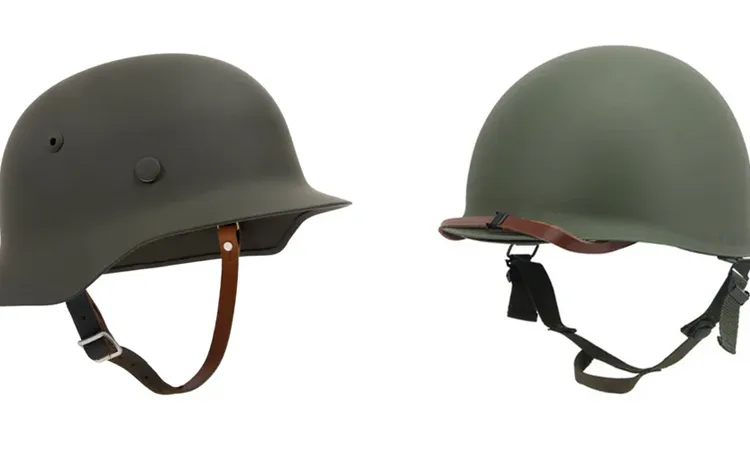
While the M1, Stahlhelm, Brodie, and SSH 40 were perhaps the most popular, several other countries created special helmets for their soldiers as well:
Italy: The M33 helmet was used by Italian soldiers in WWII. Its odd shape set it apart from other helmets in Europe.
Japan: The Type 90 helmet, made of steel and leather, was utilized by Japanese soldiers in the Pacific.
France: The Adrian helmet, originally worn in WWI and reutilized in WWII, had a bowl shaped shape with a crest for added protection.
Helmet Insignia & Designs
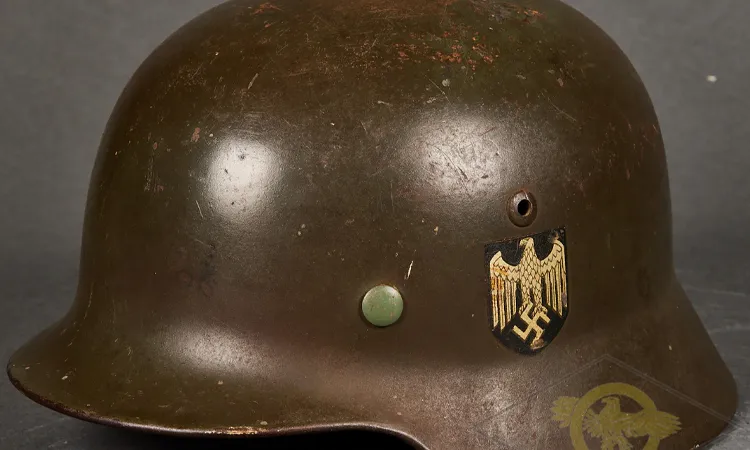
Back in WWII, a helmet wasn’t just some chunk of metal you slapped on your head and called it a day. Nah, it was basically a walking billboard for whoever wore it. You could tell a bunch about a guy just by glancing at his helmet his rank, what unit he ran with, whose side he was on, maybe even what weird job he got stuck with that week.
And those designs? The little badges and doodads weren’t just there to make the helmet look cool (though, let’s be real, some of them did). They packed a punch on the inside too. Soldiers didn’t just see a symbol they felt it. It was about pride, belonging, knowing you were part of something bigger than yourself. Plus, let’s not forget the whole “instilling respect” thing. People saw your helmet, and they knew not to mess with you or, at least, that’s what you hoped.
U.S. Army Helmet Insignia: The Stars and Stripes
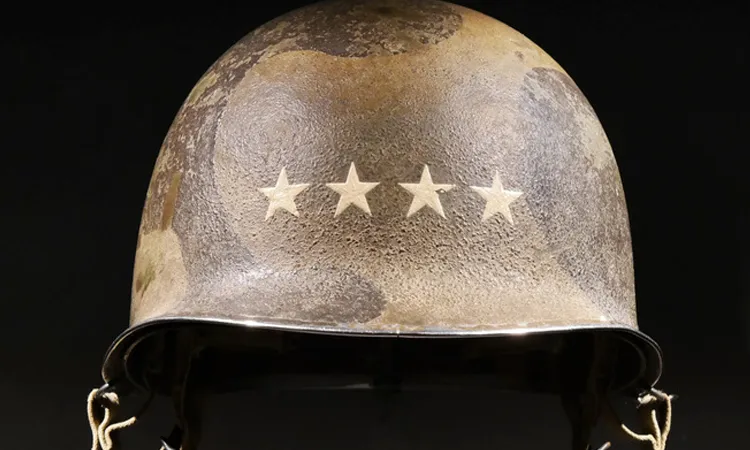
If you look at old photos of U.S. soldiers, you will probably spot that classic M1 helmet with a bold white star slapped on the front. Sometimes it’s just basic rank stuff, other times it’s way more specific like those badass 82nd or 101st Airborne logos. Honestly, it’s kinda wild how much you could tell about someone just from a little paint on a helmet.
Stars and Bars: The classic emblem for U.S. Army divisions often was a recognizable patch on the helmet, representing a soldier’s division or battalion.
Service Stripes: Among officers, the number of service stripes displayed on a helmet may signify rank and veteran status of the wearer.
German Army Helmet Insignia: Signs of Power and Domination
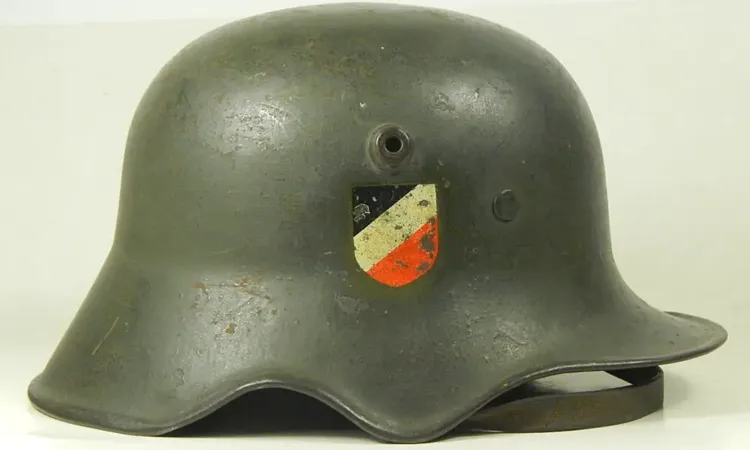
Man, those old German Stahlhelms? Wild how loaded they were with symbols. You had everything from the infamous swastika and that creepy eagle clutching at it, to the skull and-crossbones (the Totenkopf, if you wanna get fancy) slapped on by the SS big shots. The Waffen SS loved their flashy badges too basically, if you saw one of those helmets bristling with insignias, you knew the guy wearing it wasn’t just your average grunt. Whole thing’s like a walking billboard for power trips and bad ideas, honestly
Eagle and Swastika: An unmistakable symbol of Nazi supremacy, typically embossed at the front of the helmet.
Waffen SS and SS Totenkopf: SS soldiers, particularly the infamous Totenkopf Division, would wear helmets emblazoned with skull symbols as a symbol of their killing intent.
British Army Helmet Insignia: Honor and Heritage
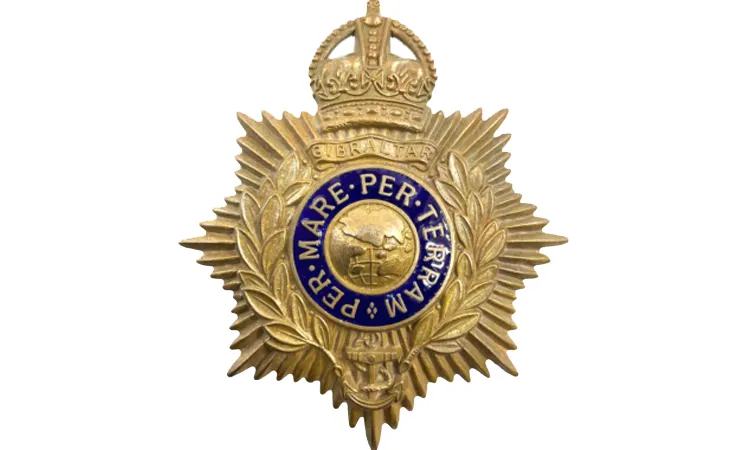
Okay, so British soldiers rocked the Brodie helmet, right? And they didn’t just leave ’em plain oh no, these helmets often sported some pretty clear regimental markings. You’d spot symbols showing which unit the guy belonged to, like the Royal Army Medical Corps or the Royal Engineers. Sometimes, they’d even slap on a Royal Crown symbol if you were dealing with a special unit. Basically, these helmets were like walking name tags no mistaking who you were dealing with.
Royal Army Insignia: A crown symbol or Royal crest was visibly marked on helmets, emphasizing British tradition and the involvement of the monarchy.
Unit Insignia: Units of particular regiments, like the Royal Fusiliers or Royal Tank Regiment, had distinctive badges for the helmet.
Soviet Army Helmet Insignia: The Red Star of the Revolution
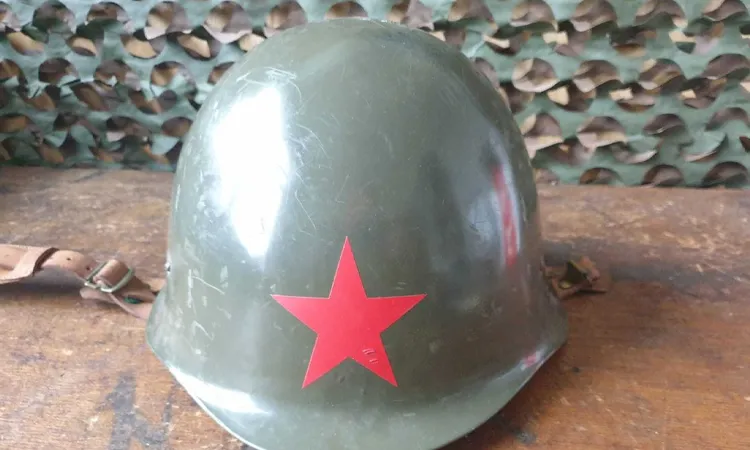
Alright, so the Soviet SSH 40 helmet yeah, not exactly a fashion statement. It’s just this no nonsense, plain chunk of metal slapped together for business, not beauty. The Red Star? Front and center, basically screaming, “Hey, look at us, we’re tough and together!” Sometimes they’d switch up the paint job olive green if they felt fancy, or just boring old grey. Oh, and let’s not forget that hammer and sickle logo, like a giant neon sign for “Team Communism: Proudly representing the working class, whether you like it or not.”
Red Star: The Red Star was a very common symbol on Soviet helmet and military uniform. It was commonly painted on the front of the helmet and represented the Soviet Union’s strength in fighting against fascism.
Branch Insignia: Other unique insignias indicated whether a soldier belonged to a certain military branch, i.e., tank divisions, infantry, or paratroops.
What the Symbols Represent
Look, those helmet badges? Way more than just shiny add ons. We’re talking loyalty, bragging rights, and a side of “check out my rank, buddy.” Whether you were some bigwig officer, part of a fancy squad, or just another grunt, those emblems actually meant something. Guys wore ‘em with real pride, like they actually mattered not just to show off, but deep down, it hit different.
Conclusion
Honestly, WW2 helmets? They’re way more than rusty relics or props for history nerds. Think of them like battered portals, still echoing with the chaos they survived. Pick one up, and you’re practically shaking hands with the ghosts of the past sweaty palms, panic, maybe a bit of leftover courage (or pure dumb luck). People who collect these aren’t just stacking up war junk in their basements. They’re basically hunting down pieces of a world we’ll never totally get, no matter how many books we read. Every dent’s got some drama behind it, every scratch is a close call, and those weird scribbles inside? Sometimes they’re hilarious, sometimes heartbreaking, but always, always wild.
Thinking about snagging one for yourself? Go hit up miltrade. They’ve got the real deal helmets, uniforms, you name it. And hey, it’s not just another thing to stuff on a shelf. It’s like, every time you walk by, you remember there’s a story there, a real one, not some Hollywood rewrite. That’s heavy.
FAQs
Are WW2 helmets collectible, or is it all hype?
No hype at all. Handle a dented steel shell and you’re holding somebody’s survival story. And if you want the real deal, Miltrade’s where you find them without wondering.
What is the rarest helmet that I might just be able to obtain?
For me, it was an M1 paratrooper marked one I purchased from Miltrade. Not museum quality, but something you will be discussing for years.
Do the paint and insignias actually matter?
Yes. A plain helmet is neat, but a hand painted unit marked helmet? That is similar to having a soldier sign his own autobiography.
Are German Stahlhelms harder to locate than American M1s?
Yeah, especially the SS marked ones. But Miltrade’s got both and the secret is getting to it before another collector does.
What is the appeal beyond the “cool factor”?
It’s history you can touch. Every dent, every scratch is a moment frozen in steel. The “cool factor” is merely an extra credit.
